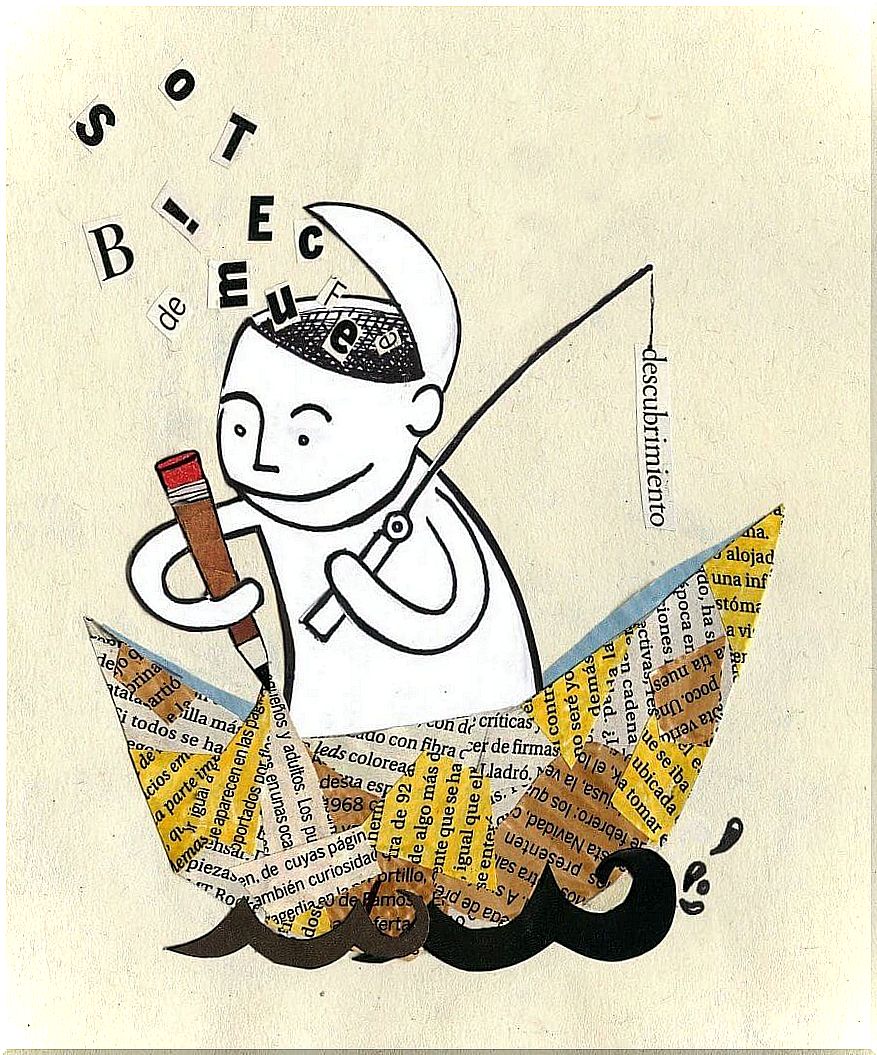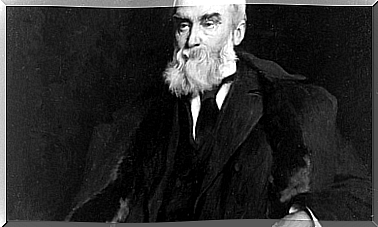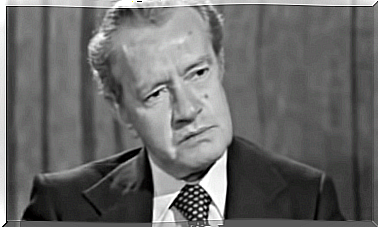Do You Know What Narrative Therapy Is?

Narrative therapy uses the narrative mode for therapeutic purposes. Narrative mode is one that uses the point of view of a narrative voice to present a literary or theatrical story among others. This narrative mode is presented as a respectful and not overwhelming approach, based on the respect of a maxim: people are experts in their own lives (Morgan, 2004).
As we said before, narrative therapy seeks a respectful, non-overwhelming approach to therapy as well as community work. In addition, she sees the problem as a separate entity from people and assumes that people have many skills, competencies, beliefs, values, compromises and beliefs that will assist them when reducing influence. negative of the problem within their life.
For narrative therapy, the words “story” or “narration” mean: events linked, in a sequence, through time and in accordance with a theme. As humans, we interpret and make sense of everyday life experiences. We are looking for a way to explain the events and make sense of them.
This meaning is the one that gives meaning to the story (to the narration). We all have many stories about our lives and relationships that are happening simultaneously. We have, for example, stories around us, of our abilities, difficulties, skills, actions, desires, work, successes and failures. How we write these stories and try to make them cohesive is very much responsible for how they evolve and how we continue to write them.
We are talking about a succession of events linked and united by a temporal thread. It is precisely on this temporal thread that we have selected them because they adapt more to the idea of the dominant story. Those who remain outside the mainstream story remain hidden or with less meaning (or altered meaning) in relation to the dominant theme.
For example, if we had a dominant story that has a good conductor in it, whenever they respect the signals, it makes sense, and that meaning reinforces the story’s conclusions. On the day they are fined, as this is not in keeping with the dominant story, the event will be hidden or minimized. It does not fit in the global sense.
What are the main goals of narrative therapy?
The main objective of narrative therapy is to offer the person the space to define their own life according to an adapted narrative mode (which is good for them). The secondary objectives would be as follows:
- Incorporate new elements into people’s stories.
- Allow the person to build a plan for a better future.
- To be able to share these new senses with our environment, thus facilitating a new relational dimension.

Individuals, we are storytellers
It may sound strange to you, but all human beings are storytellers. Tales that we tell to others, but also tales that we tell ourselves personally. In addition, in many tales there is often a large part of the truth, and another part made up.
We are born with a narrative need. Thus, we socialize, participate in our own development and establish an autobiographical memory that gives us meaning. Personal storytelling is what we tell (and tell ourselves) about our own life. We ourselves create our world, and for that, we are responsible for how we read it.
This gives us the opportunity to mark the first difference between the problem and the person. From this difference arises a great opportunity, one that will allow the person to assess his own resources and analyze the problem from another perspective. The history of the person will be represented by successive padlocks of which we will decipher a corresponding interpretation. From there, it will establish a narrative voice and an argumentative thread on which to intervene.
Also, in our narrative, we decide what to keep and what to reject from our history. Thus, our personal history will be influenced by socio-cultural factors, as much as by more individual factors, as can be our genetics.
Language matters more than you imagine
Language is the medium we use to create or (re-create) and present ourselves. It is also useful for leading us into our inner world of thoughts and feelings, and from there arises the importance of analyzing this language. If we create our reality from the explanations we give for that reality, the narrative will define what are called “dominant story effects”.
These effects are those which derive, for example, from the tone or the voice that our history has as a whole or in general. So, if ours is a story of abandonment and loss (written and told by ourselves), the effect of that dominant story will be melancholy.
The therapeutic process of narrative therapy
The therapist’s position in this model will shift from that of an expert to that of accompanying the person asking for help, being co-author of the therapeutic process and not a client. nor a patient (White, 2004).
The idea of the therapeutic process using narrative techniques is classically to be able to find an alternative story, a deconstruction of the dominant narrative story, in favor of a renewed and different story.
The reflection turns in favor of this new narrative by seeking what we call the isolated successes, which give us the opportunity to introduce new information and / or a new event. However, they do not give the opportunity to build a new story and / or a new identity.

This technique is at the same time very simple and extremely complicated. It is simple in the sense that it represents a linguistic separation from the patient’s personal identity problem. The complicated or difficult part is the delicate way to get there. It is precisely through the careful use of language in therapeutic conversation that the person’s healing begins and ends.
The innovation in the narrative approach is that it provides a sequence of questions that constantly produces a liberating effect for people. Following this therapeutic sequence is like building an archway brick by brick. If we want to reach the end without having patiently laid the first bricks, our arch will not stand up.
Technical description of narrative therapy
It is true that our life is as it is, but we can always rethink it differently. Basically, each person can rewrite their story as they wish (García Martínez, 2012). There are three dimensions about the narrative matrix that allow coherent, complex and multiple storytelling (Gonçalves, 2002):
Narrative structure : construction of the meaning of our own experiences through a process of connections through the different narrative episodes of our lives. The structure is made up of:
- A beginning, which is the starting point of our history. We can take the example of a patient who comes to a consultation for the first time and reports that they do not know where to start. One of the therapist’s responses might be “At the beginning” or “When it is easiest for you to start explaining your story” (this moment will be the beginning).
- A development of history. It includes the concrete events, the internal responses, the objectives of the protagonists, the actions which transform, the cause and the effect, and finally, the context.
- A final, which is taken into account when the therapist obtains determined results and / or the end of the story.
Narrative process : it relates to the way of explaining our lives, that is to say the tone we use (for example, of dramatic engagement).
Narrative content : it refers to the diversity and multiplicity of the narrative production, the themes or frames that we evoke, sometimes falling on the “broken record” or the repression of old unsolved themes.

Narrative technique exercises
First steps to change our internal dialogue:
The internal dialogue is interrupted as it begins, by the will. You are as you say you are, but you might change if you started to speak differently (Castaneda, 1994), to tell yourself that you are different. Below, a series of exercises to work on the inner dialogue will be presented to you, exercises on this voice that speaks to you continuously and translates reality:
- Know your internal dialogue : Pay attention to the form and content of your internal dialogue. Ask yourself if this dialogue is destructive or constructive, restless or serene. Definitely, negative or positive. To change it, we must first know its content, and the thoughts that most often cross our mind.
- Formulate the correct questions : Analyze the situation at hand by changing the questions that you ask yourself personally. For example, instead of asking yourself “Why did this happen to me?” You may ask yourself “What can I learn from this situation?” “.
- Changing the Course of Things : We can change the way we talk to each other. It can help us to start talking to each other like a mother talks affectionately to her child. Incorporate sweet, kind words into your internal dialogue.
Personal narrative tools
There are many resources to be able to explore aspects of our storytelling, such as metaphors, tales or therapy maps among others. Let’s take a look at some of these resources:
Resources for knowing yourself
- Life stories: these are stories intended to give meaning or to justify a certain vision of events.
- Small journey on oneself : it is about imagining and writing a letter to a person with whom we have not communicated for a long time.
- Ten years later : one carries out a description of a projection of oneself ten years later physically, internally, in work, relationships and passions.
- Preferences : think and write down our preferences, to reaffirm ourselves and give us the pleasure of expressing our freedom through choices that are specific to us.
- Spaces : divide a grid into different spaces dedicated to each important person in your life, the most important places, the most joyful events, the most pleasant sensations, the most beautiful dreams and the loves that have made you or you mature have made it grow.
- I remember… : the person must finish this sentence without thinking too much about the answer. The incomplete sentence can be reused without limit as long as it allows for exploration and work.
- To love the mystery : it is a question of seeking within ourselves these questions which remain unanswered.

Metaphors and tales
A metaphor is a linguistic form that allows an implicit comparison to be made between two different entities, a dramatic appeal that captures attention and provides an altered framework through which the patient can consider a new experience (Lankton y Lankton, 1983).
Three types of metaphors are mentioned to be used in the therapeutic process:
- Those which refer to the personal experiences of the therapist.
- Those that refer to absolute truths.
- Stories adapted to the circumstances of the person.
Therapeutic metaphors can be used to form an opinion, suggest solutions, access and use of resources, personal knowledge, sow specific ideas …
On the other hand, tales are expressions of essential philosophical truths, explanations of nature or stories about dreams. The tales are therapeutic because the person has the possibility of finding his own solution through the rewriting of the history and the conflicts which appear in it.
The tale does not refer to the outside world, although it can be very realistic and have everyday features interspersed with it. The unreal nature of these tales is an important resource, it makes evident that the interest of tales is not useful information about the external world, but the internal processes that take place in the individual’s body ( Gordon, 1978).
Ultimately, telling strangers our personal stories frees us from them and allows us to convert them into past stories. This allows us to begin to imagine a future to our liking, documenting these tales so that they are not lost and can serve as inspiration for others. The ultimate goal is for people to understand the power of the way they tell stories to themselves, to express what is happening and how the way they tell now influences the way they behave.
Bibliography:
White, M. (2002) “El enfoque narrativo en la experiencia de los terapeutas”. Gedisa.
Nomen Martín, L. (2016) “50 psicoterapéuticas técnicas”. Pirámid.









